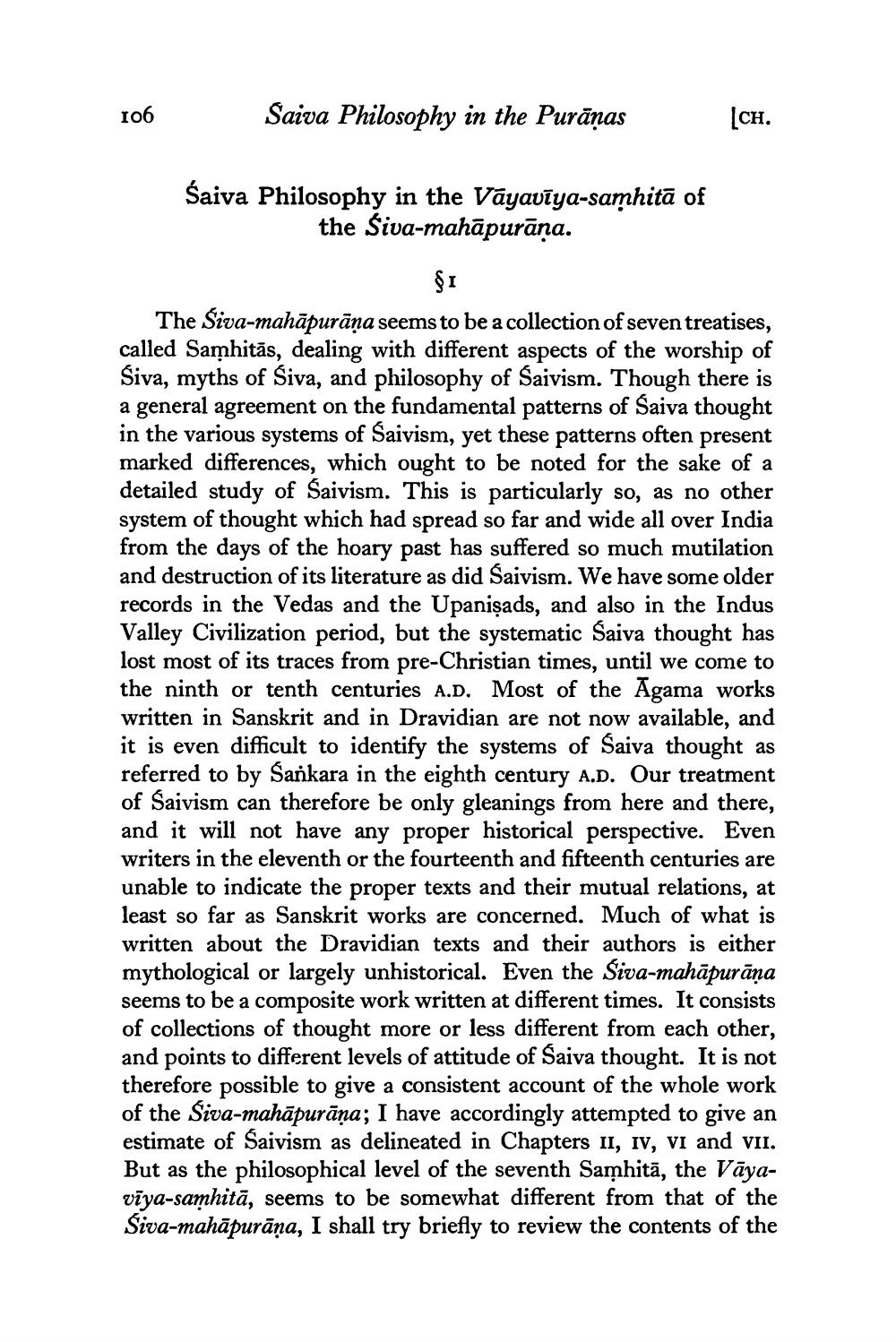________________
Io6
106
Saiva Philosophy in the Purāṇas
[CH.
Śaiva Philosophy in the Vāyavīya-samhitā of
the Siva-mahāpurāņa.
ŞI The Siva-mahāpurāņa seems to be a collection of seven treatises, called Samhitās, dealing with different aspects of the worship of Siva, myths of Siva, and philosophy of Saivism. Though there is a general agreement on the fundamental patterns of Saiva thought in the various systems of Saivism, yet these patterns often present marked differences, which ought to be noted for the sake of a detailed study of Saivism. This is particularly so, as no other system of thought which had spread so far and wide all over India from the days of the hoary past has suffered so much mutilation and destruction of its literature as did Saivism. We have some older records in the Vedas and the Upanişads, and also in the Indus Valley Civilization period, but the systematic Saiva thought has lost most of its traces from pre-Christian times, until we come to the ninth or tenth centuries A.D. Most of the Agama works written in Sanskrit and in Dravidian are not now available, and it is even difficult to identify the systems of Saiva thought as referred to by Sankara in the eighth century A.D. Our treatment of Saivism can therefore be only gleanings from here and there, and it will not have any proper historical perspective. Even writers in the eleventh or the fourteenth and fifteenth centuries are unable to indicate the proper texts and their mutual relations, at least so far as Sanskrit works are concerned. Much of what is written about the Dravidian texts and their authors is either mythological or largely unhistorical. Even the Siva-mahāpurāņa seems to be a composite work written at different times. It consists of collections of thought more or less different from each other, and points to different levels of attitude of Saiva thought. It is not therefore possible to give a consistent account of the whole work of the Siva-mahāpurāņa; I have accordingly attempted to give an estimate of Saivism as delineated in Chapters II, IV, VI and VII. But as the philosophical level of the seventh Samhitā, the Vāyavīya-samhitā, seems to be somewhat different from that of the Siva-mahāpurāna, I shall try briefly to review the contents of the




